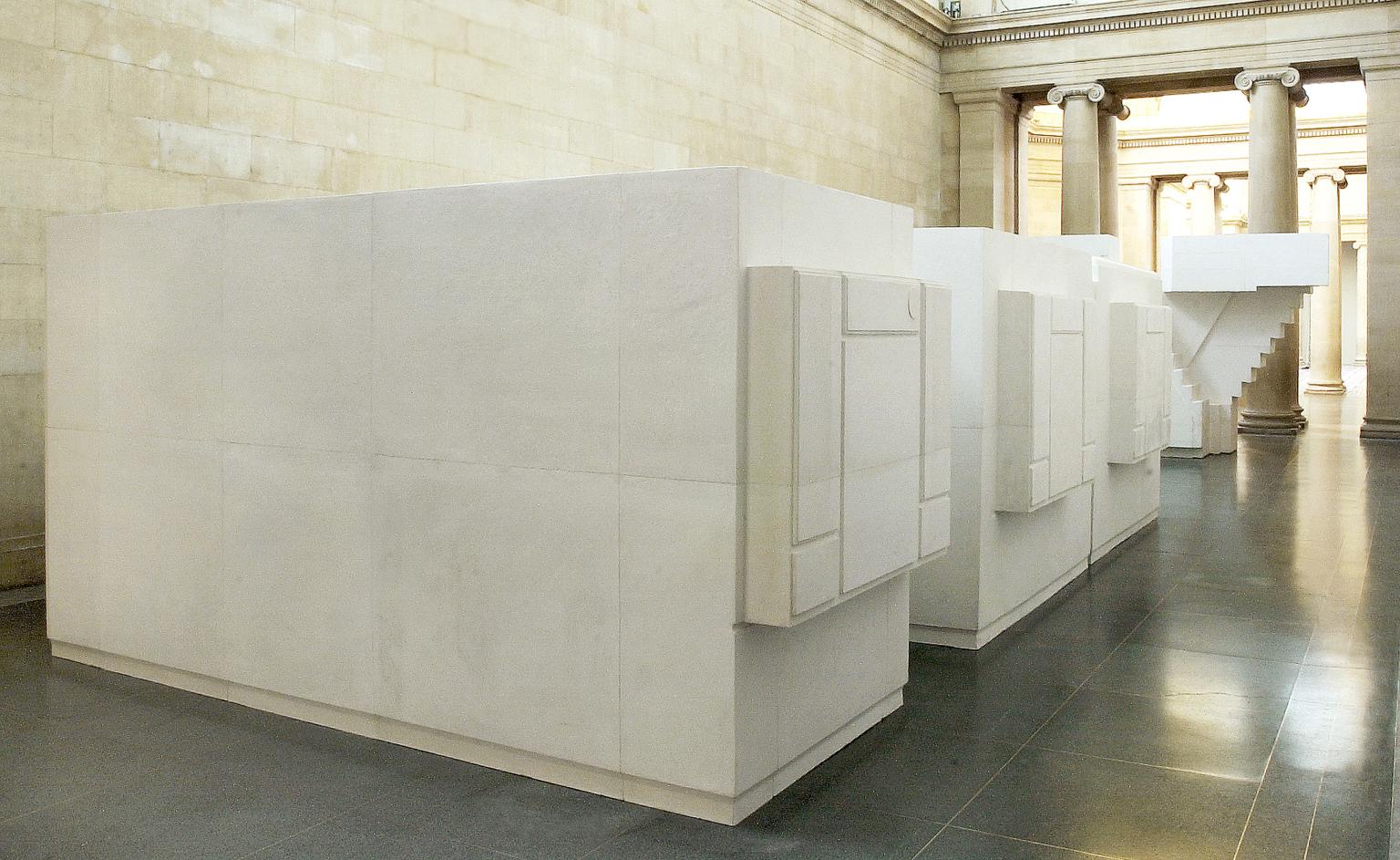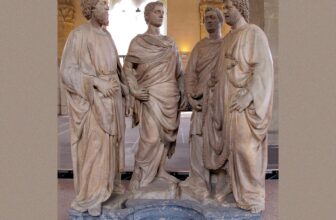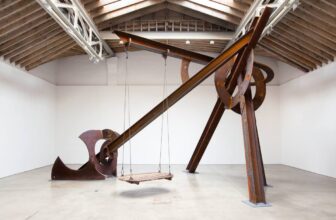
Rachel Whiteread’s Most Famous Sculptures
Rachel Whiteread is one of Britain’s most significant and innovative contemporary sculptors. Known for her ability to give form to emptiness, her work explores the haunting poetry of absence, memory, and architecture. She uses traditional sculptural materials in unconventional ways, casting everyday objects and architectural spaces to preserve the negative space they leave behind. Over the decades, her work has stirred public discourse, won prestigious accolades, and taken residence in some of the world’s most important museums and public spaces.
This story post dives deep into Whiteread’s sculptural journey, what she is known for, how she creates her sculptures, where her most famous pieces are located, and how much they are worth in the contemporary art world.
Who Is Rachel Whiteread?
Born in London in 1963, Rachel Whiteread studied painting at Brighton Polytechnic and sculpture at the Slade School of Fine Art. Her background, her mother was an artist and her father a geography teacher, informed her sensitivity to space, structure, and domesticity. She became part of the Young British Artists (YBAs) movement of the late 1980s and early 1990s, a group known for pushing the boundaries of conceptual art. But unlike many of her peers who embraced shock tactics or pop-cultural references, Whiteread’s work was contemplative, quiet, and rooted in material transformation.
She rose to prominence with her unique process of casting negative spaces, an idea that redefined what sculpture could be.
What Is Rachel Whiteread Known For?
Whiteread is best known for casting the empty space around or inside objects and architectural structures, such as beds, bathtubs, bookcases, and entire rooms or houses. Her sculptures often preserve the traces of everyday life, the creases in a mattress, the contours of a wall, transforming them into ghostly, solid forms.
Her 1993 sculpture “House”, a concrete cast of the interior of a Victorian terraced house, brought her widespread acclaim and controversy in equal measure. That same year, she became the first woman to win the Turner Prize. The work was both a physical and emotional monument, solidifying the memory of a building doomed to demolition and evoking themes of loss, urban change, and memory.
More broadly, Whiteread’s work is known for:
Giving shape to absence.
Exploring the intersection of personal memory and public space.
Using industrial materials like resin, plaster, and concrete.
Pushing the boundaries of minimalism and conceptual art.
How Does Rachel Whiteread Make Her Sculptures?
Whiteread’s method is deceptively simple in concept but technically complex in execution. She begins with a found object or architectural feature, such as the inside of a closet, a hot water bottle, a mattress, or an entire room. She then creates a cast of the negative space of that object.
Her process typically follows these steps:
Selection of Object/Space: She chooses a site or object with emotional or historical significance.
Mold Creation: She builds a mold around the object or space using rubber, plaster, or fiberglass.
Casting Material: She pours casting materials like resin, plaster, concrete, or polyurethane into the mold.
Demolition or Removal: Once the material has set, the original object is removed or demolished, leaving behind the cast form.
Finishing Touches: The resulting sculpture may be sanded, pigmented, or left raw, depending on the desired aesthetic.
This inverse method preserves the impression of the original object, every surface texture, imprint, and even imperfection becomes part of the finished sculpture. The result is often uncanny, a ghost-like presence of something that once was but no longer is.
Rachel Whiteread’s Most Famous Sculptures
1. House (1993)
Location: Formerly Grove Road, East London (demolished)
Material: Concrete
Significance: Possibly her most iconic work, House was a concrete cast of the inside of an entire Victorian house. It stood as a monument to the mundane and a critique of urban renewal. The local council controversially demolished it just a few months after its unveiling, but its impact on contemporary sculpture endures.
2. Ghost (1990)
Location: National Gallery of Art, Washington D.C.
Material: Plaster
Significance: Ghost was Whiteread’s breakthrough piece, a plaster cast of the negative space of a room in a North London house. It invited viewers to confront what’s normally unseen, space itself. It was quiet, intimate, and spiritually evocative.
3. Holocaust Memorial (2000)
Location: Judenplatz, Vienna, Austria
Material: Concrete
Significance: Also known as the Nameless Library, this memorial is a cast of a library with its books facing inward, their spines hidden. It symbolizes the loss of Jewish knowledge, culture, and lives during the Holocaust. It’s stark and unadorned, its silence speaks volumes.
4. Embankment (2005-2006)
Location: Tate Modern’s Turbine Hall, London
Material: Polyethylene
Significance: Commissioned for the Unilever Series, Embankment consisted of 14,000 translucent white casts of cardboard boxes stacked into glacier-like formations. It was inspired by her mother’s death and clearing out her belongings. The installation was immersive and monumental, simultaneously evoking industrial waste and personal memory.
5. Cabin (2016)
Location: Governor’s Island, New York
Material: Concrete
Significance: This small concrete cast of a cabin sits in quiet solitude, overlooking the Statue of Liberty. It is contemplative, a lone architectural ghost that comments on isolation, retreat, and the American dream.
Where Are Rachel Whiteread’s Sculptures Located?
Whiteread’s work has been exhibited worldwide, and many of her pieces are part of permanent collections or large-scale public installations.
Public Installations & Permanent Collections:
Tate Britain, London – Holds major works including Untitled (Room 101).
National Gallery of Art, Washington D.C. – Home to Ghost.
Museum of Modern Art (MoMA), New York – Several works, including untitled casts of domestic objects.
Guggenheim Museum, New York
Judenplatz Holocaust Memorial, Vienna – Permanent public memorial.
Governor’s Island, New York – Cabin, a long-term installation.
Scottish National Gallery of Modern Art, Edinburgh
The Broad, Los Angeles
Temporary Exhibitions:
Whiteread has exhibited in major institutions including the Serpentine Gallery, the Venice Biennale, and the Gagosian Gallery. Her retrospective at Tate Britain in 2017 was a landmark event that showcased the breadth of her career.
How Much Are Rachel Whiteread’s Sculptures Worth?
The market for Rachel Whiteread’s work is robust, reflecting her critical acclaim and historical importance. Her sculptures, depending on size, material, and provenance, can range in value significantly.
Smaller sculptures and casts: Typically range from $50,000 to $500,000 at auctions.
Large-scale works or rare pieces: Have fetched upwards of $1 million.
Monumental public commissions: These are typically commissioned by governments or institutions and can have budgets in the millions, though they are not usually sold on the open market.
Some key auction results include:
Untitled (Yellow Bath) (1996) sold for approximately $650,000 at Sotheby’s.
Untitled (Closet) (1988) sold for around $430,000.
These numbers reflect not just the material cost, but the conceptual depth and technical difficulty of her method. Because each cast is unique, they are deeply valued as one-of-a-kind interpretations of form and space.
Why Rachel Whiteread Matters
Rachel Whiteread’s work offers a profound meditation on memory, space, and loss. In an age dominated by spectacle and digital ephemerality, her sculptures are grounded in material and memory. They make the invisible visible, not through grand gestures, but through subtle inversions. She captures time, emotional residue, and silence in solid form.
Whiteread challenges how we perceive the built environment and personal space. Her pieces are not merely casts; they are elegies, objects transformed into vessels of remembrance.
Rachel Whiteread’s sculptures are more than just innovative uses of casting; they are monuments to forgotten spaces, overlooked objects, and the architecture of daily life. She reverses the gaze of traditional sculpture, asking us not to look at objects, but the spaces between and within them. Through her poetic inversions, she invites us to confront the traces we leave behind, intentionally or not.
From casting a single room to memorializing genocide, her work spans the deeply personal to the historically monumental. As cities grow and change, her sculptures stand as fixed points of memory, questioning what we preserve, what we discard, and how we remember.
Whether tucked away in galleries or standing in public spaces, Rachel Whiteread’s sculptures do not shout. They whisper. And in that whisper is a profound echo of the lives and spaces that once were. image/ Tate




